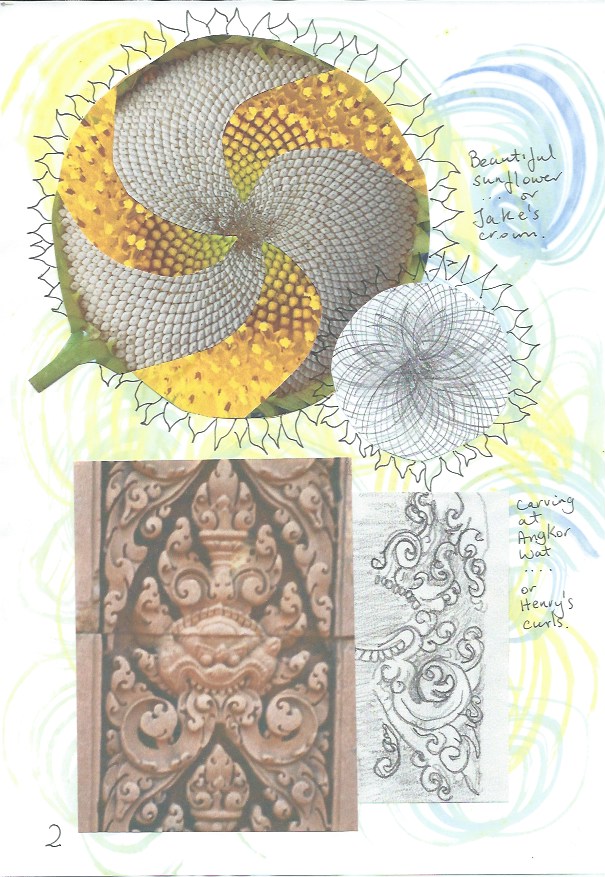I chose turquoise/blue and orange/gold without realising how many fabrics and threads I had in the colour range!
I enjoyed tie-dyeing in Module 2, so it was fun to have another go, this time with colours. I dyed plain white cottons and silks as well as some of the plain coloured fabrics I had in my stash. I used Dylon again. The cottons took the dye very well and the silks produced more muted colours, but still very attractive.
SKETCH BOOK
 |
| Page 29 |
It's all in the preparation!
 |
| Page 30 |
Dip dyed and random dyed cotton and silk fabrics and threads.
 |
| Page 31 |
Various beads, shells and sequins coloured with blue and orange acrylic paint.
 |
| Page 32 |
White cotton dyed turquoise.
 |
| Page 33 |
White cotton dyed orange.
 |
| Page 34 |
Medium weight white silk dipped into orange dye. I was surprised that the colour appears so pink.
 |
| Page 35 |
The same process as on page 34, this time with turquoise dye. The colour has stayed true to the original.
 |
| Page 36 |
Blue cotton (from my stash) dip dyed with orange.
 |
| Page 37 |
White habotai silk, dip dyed with turquoise and orange. Again the orange appears pink on the silk.
 |
| Page 38 |
White cotton, monoprinted with turquoise and orange acrylic paint and fabric medium.
 |
| Page 39 |
Dyed orange fabric from page 33 monoprinted with turquoise, using a fossil shaped mask.
 |
| Page 40 |
Turquoise cotton fabric from page 32, monoprinted with yellow swirls.















































